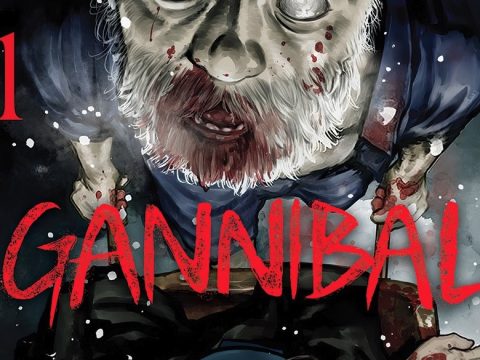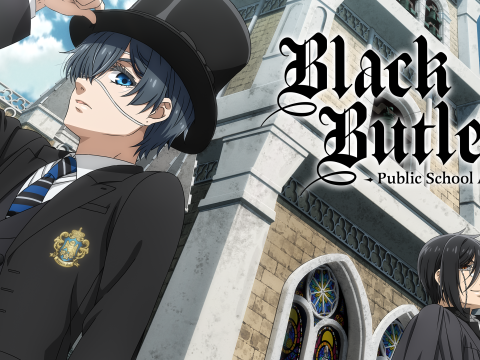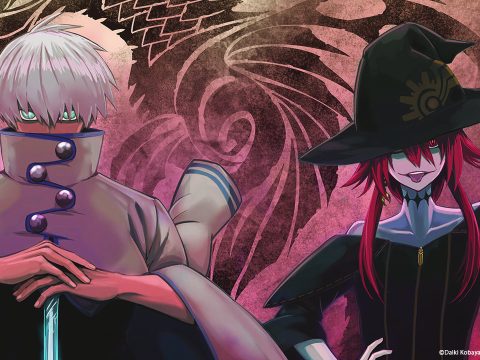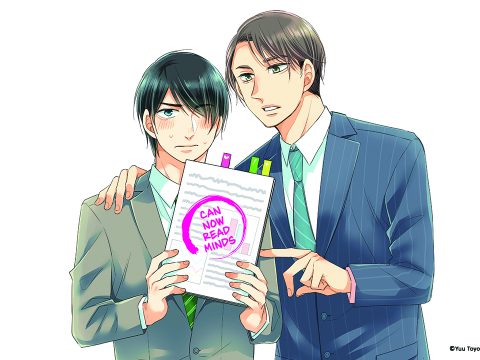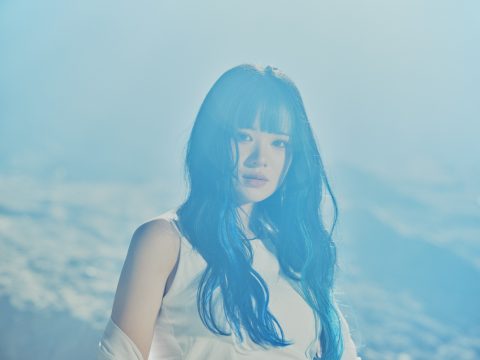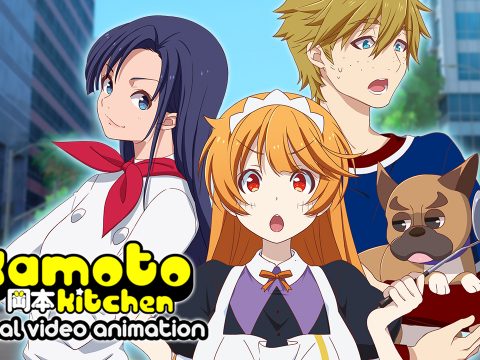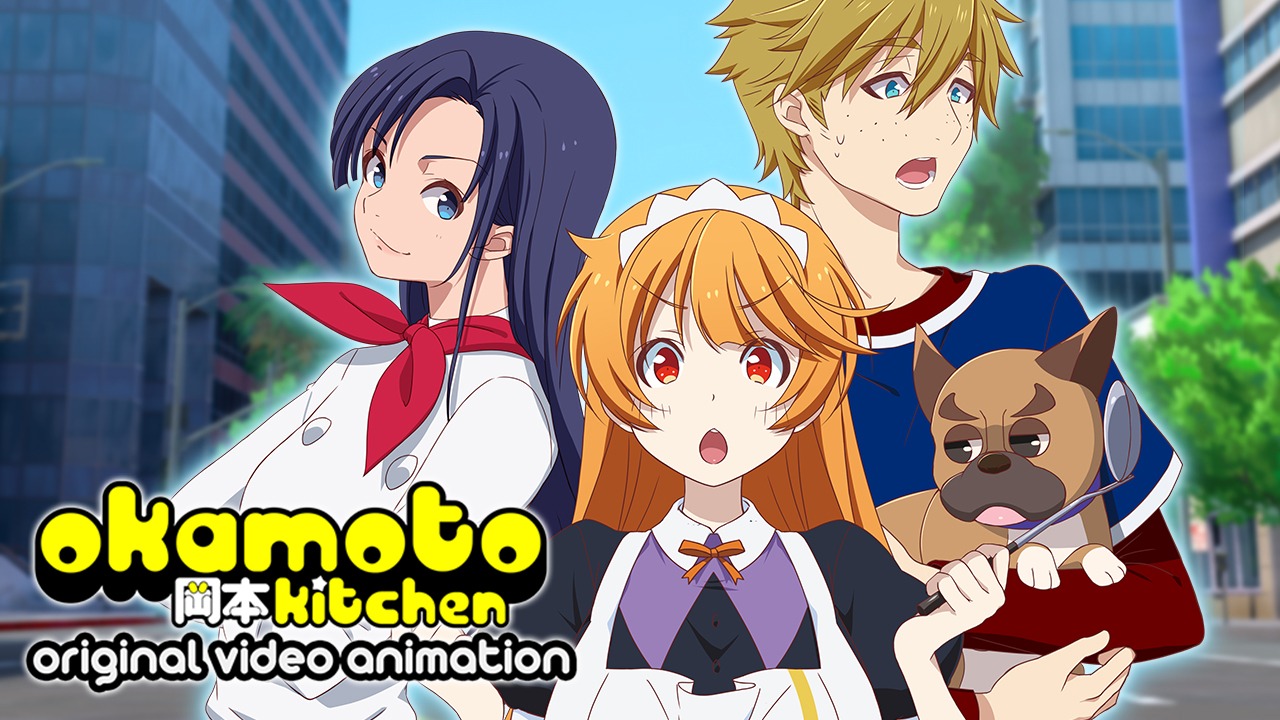
What does an anime-themed Japanese food truck do after overcoming adversity in the business? Make an anime about it, of course. The Okamoto Kitchen OVA, out now on YouTube (or the Okamoto Kitchen site here), is a comedic take on what the real business Okamoto Kitchen has been through, with Japanese anime studio Magic Bus handling the layout and keyframes. Gerald Abraham, the owner and creative director of the Okamoto Kitchen food truck and catering service, was heavily involved in the creation of the anime. He spoke to Otaku USA about the inspiration, the creative process, and the message the OVAs contain.
Can you tell us how this anime came about?
I’ve been into anime since I was a little kid, probably about 5 years old. I’m 49 now. It’s been pretty much my favorite medium. I’ve always gravitated toward it. In regards to wanting to make an anime, since I was young I’ve always wanted to do something related to anime or be part of some sort of production. I got into VFX instead. I worked VFX for years in Hollywood studios and car commercials and whatnot.
We started the food truck in 2014, and the industry was insanely crazy. Just the most underhanded stuff was happening on a day-to-day basis. That was sort of our inspiration, to say, “We should tell this story because no one really knows about it.” The operators that act the way they do, they don’t ever let the customers see that side of them. But there’s a low end attitude when it comes to other truckers, especially new people trying to get into the business. We felt that pretty badly. Within two years it got so bad I felt like there was a need to tell the story, and since we’re an anime-themed food truck, anime would have been the best way to tell it.
How close is the anime to the real story?
There are bits and pieces of experiences we had that are highly embellished. There are some instances that are based on real life experiences. Basically, the story is about an up-and-coming food truck that’s trying to get into the business and dealing with adversity almost every step of the way. It is an inspirational story. It’s a true story in a sense. We’re still growing as we are as a business, and the things that happen are relatable to a lot of people, generally to small businesses or any kind of entrepreneur who’s trying to make something out of nothing. I think it can inspire all those people, or people can find a point they can relate to.
What was the creative process for making it?
Originally, before we even had a story, I was coming up with character archetypes and whatnot. Haru, who is our maid, is completely fictional, but there are characters who are based on real people. It’s not verbatim, but experiences influenced how a character might act or behave. Number one was creating the different characters.
When it came to the writing, I sat down with writers Rafael Gamboa and Mykal Williams and talked about things that were key to get across. I’m personally not a writer, but I can tell you funny stories. Working with them, that was basically getting the script process together. After the script was created, we had a casting for Haru. We had, I think, about 150, 160 try out for her voice. Once we decided on Cristina Vee, she recommended quite a few other VAs to do the other roles. We recorded the VOs in early 2020, then we pretty much got hit with COVID which brought everything to a screeching halt.
We were on hiatus for seven or eight months to a year. The Kickstarter we had done in 2019 [to fund the project] was created by a studio in Japan called Studio Engi. We had already spoken with Studio Engi and they had agreed to work on this OVA with us. So I did the previz on my own; I’m a CG artist, so everything started in CG and then turned into storyboards and then turned into previz. Once that was done I turned it into Studio Engi. This was around maybe October 2020. At this point they basically said, “Unfortunately, we are booked for the next two to three years.” This is what COVID did. Every studio in Japan was booked for like two to three years because I think the production companies were scared nobody was going to go outside again and they needed a lot of content. That hosed us pretty bad. Luckily, Studio Engi felt responsible because they had loosely, unofficially agreed to want to work on it. So they felt it was their responsibility to find a studio for us. And that studio, after about four months of searching, ended up being Magic Bus. Studio Magic Bus has been around since the 70s. They’ve worked on a lot of stuff. They’re not as famous as MAPPA or Trigger, but they’ve been around a while and they’re very respectable.
I delivered them the previz and had a meeting on the phone. They had to revamp the characters in their style. For example, the original artwork that was created by Takuya Saitou and Azusa Saitou has a certain look to it, but in-house animators had a certain way of drawing. So even though Haru still looks like Haru and the other characters look like the other characters, how they’re drawn is slightly different.
Once that step was done, they went through the process of creating the character sheets all the way to the clean copy and then the color settings. Once the color settings were done, then they started delivering keyframes which took about a year, maybe a little longer. Again, they were doing this as a favor. They had to work on this on the side of other projects. There are about 500 shots in our show. It took a lot of time for them. All they were responsible for were the keyframes. We worked with another studio in the Philippines called Studio Nine Lives, which did all the paint and in-betweens. We had one artist in Japan who did a couple of the master shot backgrounds, but all the other backgrounds were done here. I worked with an artist to do backgrounds and pickup work. All the compositing and CGI I pretty much did myself.
We had a panel this last Saturday at Anime NYC and showed it. This young lady in the crowd raised her hand and wanted to say, “Thank you for inspiring me because I run an Etsy store and I’ve had so much trouble getting to even where I am. It gets really depressing sometimes and this really cheered me up.” She immediately understood what this was about. That’s the message we want to convey. I mean, we do it in a tongue-in-cheek way, we don’t want anyone to get depressed. It is a comedy more than anything.
____
Danica Davidson is the author of the bestselling Manga Art for Beginners with artist Melanie Westin, plus its sequel, Manga Art for Everyone, and the first-of-its-kind manga chalk book Chalk Art Manga, both illustrated by professional Japanese mangaka Rena Saiya. Check out her other comics and books at www.danicadavidson.com.


